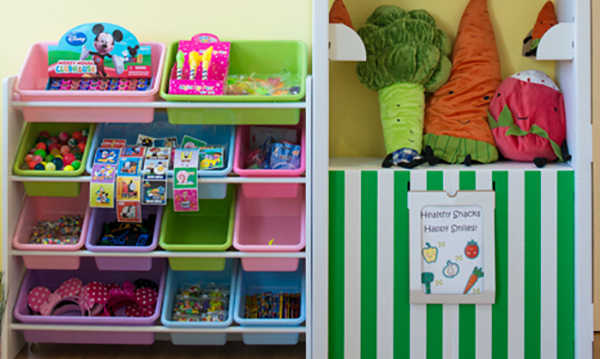Dental Treatment

1.Fillings: Fillings are usually placed in one appointment. While the tooth is numb, the dentist will remove decay as necessary. The space will then be thoroughly cleaned and carefully prepared before the new filling is placed. If the decay was near the nerve of the tooth, a special medication will be applied for added protection. The filling will then be precisely placed, shaped, and polished, restoring your tooth to its original shape and function. It is normal to experience sensitivity to hot and cold when composite fillings are first placed, however this will subside shortly after your tooth acclimates to the new filling. You will be given care instructions at the conclusion of your treatment. Good oral hygiene practices, eating habits, and regular dental visits will aid in the life of your new fillings.
2.Pulpotomy (Baby root canal): Like adult root canals, the dentist will access the nerve chamber of the tooth, and remove some of the nerve/pulp of the tooth. Unlike adult root canals, this is a very short procedure, as only part of the pulp needs to be removed, and does not require the time consuming filing of adult root canals. If the tooth has been symptomatic , this procedure will likely alleviate the pain. It also alllows for the tooth to be preserved until it is ready to fall out naturally.
3.Crowns (Caps): In cases of extensive decay or if the baby tooth required a pulpotomy, a crown is the best option. A crown (often called a cap) covers the tooth and restores it to its original shape and size. Crowns are incredibly strong due to the fact that they cover the entire tooth. This protects and strengthens the remaining tooth structure. They are the best chance for survival of a tooth that has had a baby root canal. Decay is removed and cleaned from the tooth and a pre-formed crown is placed over the tooth. Unlike adult crowns, in which the crown is made to fit the tooth, which require 2 appointments, baby crowns are placed in one visit, because the tooth is prepared to fit the crown.
4.Extractions: Generally, unless we are discussing about wisdom teeth, we would rather not extract a tooth from your child. However, it can be required when a tooth is not lost naturally or if dental decay or trauma results in an infection surrounding the root surface. When a tooth can’t be saved, extraction (removal) of tooth maybe the only course of treatment. The dentist will let you know if a space maintainer is indicated or not after the extraction.
5.Space maintainers: Space maintainer is a combination of bands and wires designed to hold the remaining teeth in a position that will allow the future permanent tooth to erupt in the proper location. Prompt placement of a space maintainer will give the permanent tooth the best chance of erupting in the mouth in the correct location. This will minimize orthodontic problems caused by premature loss of a baby tooth. If a space maintainer is not placed, the teeth will shift into the open area, making it difficult or in some cases impossible for the permanent tooth to erupt.
